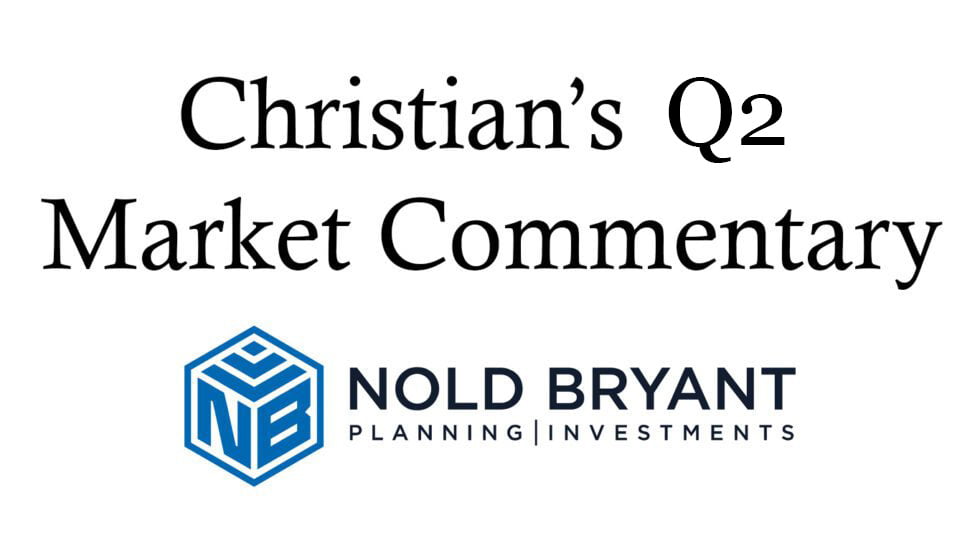Executive Summary
|
In George Orwell’s Animal Farm, there’s a well-known instance where Napoleon the pig attributes every misfortune – the broken windmill, the stolen food, and the mysteriously missing tools – to poor Snowball, the scapegoat who has long since escaped. As someone who observes financial markets daily, it feels as though we have indeed faced broken windmills, stolen food, and missing tools; however, in this scenario, tariffs take on the role of Snowball, receiving all the blame. While tariffs are undoubtedly a key factor driving market volatility, I want to pause and consider several other contributors to our current predicament before finally addressing tariffs at the end of this commentary. Thus, let’s begin by exploring some of the negatives (and I should warn you that there are quite a few) before we shift to some positives later on. Bad News In our ten market predictions in January, we indicated that we expected the risk of recession to rise throughout the year. Unfortunately, that expectation has materialized at an even faster pace than anticipated. The labor market continues to weaken, as evidenced by slow wage growth, fewer hours worked, and a slight increase in unemployment. The housing market isn’t looking good either, as interest rates remain high, the market continues to stagnate, and new residential construction is slowing down. Consumer sentiment has dropped significantly, and consumer spending is decreasing, which is understandable since in 2024, spending was high due to consumers drawing down their savings. State and local governments have reduced spending, which had previously acted as a tailwind for the economy in 2024. GDP growth will likely show a negative number for Q1 for the first time since 2022, with the Atlanta Fed currently projecting it at -2.2%. Finally, corporate earnings are most important to markets and estimates for earnings in 2025 have been revised downward by over 4%. Good News You may be wondering if there is any good news, and the answer is yes. However, this paragraph will be shorter than the previous one. When eliminating the variable of tariffs, inflation is moving in the right direction, with more progress likely as used car prices and food prices decrease. This trend should be reflected in the data in the coming months. Core services’ inflation has also improved, which is one of the data points the Fed monitors most closely. There have also been many positives in international markets, with the international index still up over 4% this year. We’re excited about the global outlook, particularly in certain sectors, as we hold a significant overweight in international versus US markets, and so far, international is outperforming by over 12%. Tariffs We’ve come to the heading that you may have immediately skipped to or may be skipping over because of the amount of content you’ve already consumed on the T-word. First, a caveat: My goal in writing about tariffs is not to give an opinion on the merits of President Trump’s strategy but rather to consider the range of outcomes, their probabilities, and the potential market reaction to each. Let’s first discuss what I would view as the most negative outcome. A scenario in which 6-12 months from now we have tariff rates like the ones released on Liberation Day (announced by Trump on April 2nd), and potentially higher ones from countries that retaliate, such as China, would be received very negatively by the market. The most likely outcome from this scenario would be a recession and a period of stagflation (high inflation, slow economic growth, and high unemployment occurring simultaneously). If there is a silver lining in this scenario, it’s that I think the stagflation would be temporary, as eventually the “stag” would outweigh the “flation” and turn into a typical recession recovery where inflation is low, and growth is low. The other good news is that I think the probability of this scenario materializing is very low. By pausing the retaliatory tariffs in response to chaotic financial markets, President Trump has already shown a willingness to negotiate, and he is prepared to revert course if things get ugly. The next outcome to examine (which is really a range of outcomes) is one where deals are struck and tariffs decrease, although the tariff rate remains significantly higher than it was a few months ago, and tariffs on China remain very high for at least the intermediate term. In my view, this is the most likely scenario for several reasons. First, Treasury Secretary Scott Bessent has repeatedly expressed a desire for the Liberation Day tariff levels to serve as a ceiling on how high tariffs go and a wish to strike deals with allies and then collaborate with them to address the China issue together. Second, we have observed a willingness from at least 70 countries to negotiate, and among those, discussions with Japan, Korea, Vietnam, and others seem quite advanced. After initially indicating they planned to, the EU also opted not to retaliate against steel and aluminum tariffs. Third, President Trump has demonstrated a readiness to carve out exemptions for industries such as technology, and we believe that in a scenario where tariffs remain on specific countries, there may be exemptions for critical industries. My overall argument for either this scenario or the final one I will present is based on the same reasons I’ve articulated for months, primarily that President Trump enjoys striking deals and wishes for his legacy to be associated with a positive stock market, even if he has discussed it less this term. President Trump wrote Trump: The Art of the Deal and negotiated with China and Mexico to eliminate tariffs during his first term, and Scott Bessent has mentioned a desire to do the same with countries willing to negotiate this time as well. President Trump has also shared posts on social media about the stock market several times in the last month, including urging investors to buy, which we interpret as a signal that the stock market continues to serve as a scorecard for his presidency. If a scenario unfolds in this manner, our perspective is that it would lead to a very positive quarter for stocks as headlines about deals propel the stock market higher. However, we believe recession risk would remain elevated, and while all of this may postpone a recession, there still would be a chance of one occurring within the next twelve months. In our opinion, the outcome with the best-case scenario is one where little or no trade barriers remain after the next few months due to significant deal-making. I believe the odds of this scenario are higher than the market anticipates and greater than the first scenario, but lower than the middle scenario. The possibility of significant trade deals and lower tariffs with most of our allies seems quite probable, but we suspect that negotiations with China will be more prolonged. If we examine President Trump’s first term, trade deals were achieved relatively quickly with our allies, while progress on a deal with China took much longer. Since then, our relationship with China has deteriorated, which may complicate matters; however, Bessent’s strategy of fostering solidarity with our allies and approaching China collectively may yield more favorable results. If a deal can be reached in the short term, the risk of a recession in China would be diminished, though not eliminated, for the reasons I outlined at the beginning of this note. To summarize, we believe deals will come, but the longer they take, the more the risk of recession rises due to increased inflation, which will negatively impact consumers with low savings levels. If uncertainty persists, it will also affect corporations’ abilities to make decisions, and we have already seen companies pull forward guidance (meaning they aren’t putting out reports on their expected future earnings). This unusual course of action can be very detrimental for stocks and hasn’t happened since the pandemic. The Federal Reserve is also on pause as they try to assess what the tariff situation will entail. We believe the Federal Reserve would like to cut rates 3-4 times this year but is waiting to see how the tariff situation develops and what inflation results from it before making cuts that could inadvertently exacerbate the issue. However, we believe much of the negative tariff news is already priced into the markets, and there are more opportunities for upward surprises than downward ones. You would be forgiven for thinking that given all of the bad news, there isn’t much of a reason to stay invested. However, I want to conclude this commentary with a list of reasons to be optimistic.
Christian |









